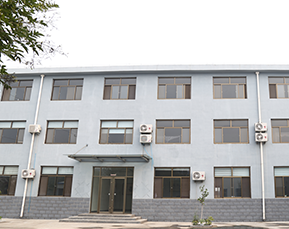 Afrikaans
Afrikaans  Albanian
Albanian  Amharic
Amharic  Arabic
Arabic  Armenian
Armenian  Azerbaijani
Azerbaijani  Basque
Basque  Belarusian
Belarusian  Bengali
Bengali  Bosnian
Bosnian  Bulgarian
Bulgarian  Catalan
Catalan  Cebuano
Cebuano  Corsican
Corsican  Croatian
Croatian  Czech
Czech  Danish
Danish  Dutch
Dutch  English
English  Esperanto
Esperanto  Estonian
Estonian  Finnish
Finnish  French
French  Frisian
Frisian  Galician
Galician  Georgian
Georgian  German
German  Greek
Greek  Gujarati
Gujarati  Haitian Creole
Haitian Creole  hausa
hausa  hawaiian
hawaiian  Hebrew
Hebrew  Hindi
Hindi  Miao
Miao  Hungarian
Hungarian  Icelandic
Icelandic  igbo
igbo  Indonesian
Indonesian  irish
irish  Italian
Italian  Japanese
Japanese  Javanese
Javanese  Kannada
Kannada  kazakh
kazakh  Khmer
Khmer  Rwandese
Rwandese  Korean
Korean  Kurdish
Kurdish  Kyrgyz
Kyrgyz  Lao
Lao  Latin
Latin  Latvian
Latvian  Lithuanian
Lithuanian  Luxembourgish
Luxembourgish  Macedonian
Macedonian  Malgashi
Malgashi  Malay
Malay  Malayalam
Malayalam  Maltese
Maltese  Maori
Maori  Marathi
Marathi  Mongolian
Mongolian  Myanmar
Myanmar  Nepali
Nepali  Norwegian
Norwegian  Norwegian
Norwegian  Occitan
Occitan  Pashto
Pashto  Persian
Persian  Polish
Polish  Portuguese
Portuguese  Punjabi
Punjabi  Romanian
Romanian  Russian
Russian  Samoan
Samoan  Scottish Gaelic
Scottish Gaelic  Serbian
Serbian  Sesotho
Sesotho  Shona
Shona  Sindhi
Sindhi  Sinhala
Sinhala  Slovak
Slovak  Slovenian
Slovenian  Somali
Somali  Spanish
Spanish  Sundanese
Sundanese  Swahili
Swahili  Swedish
Swedish  Tagalog
Tagalog  Tajik
Tajik  Tamil
Tamil  Tatar
Tatar  Telugu
Telugu  Thai
Thai  Turkish
Turkish  Turkmen
Turkmen  Ukrainian
Ukrainian  Urdu
Urdu  Uighur
Uighur  Uzbek
Uzbek  Vietnamese
Vietnamese  Welsh
Welsh  Bantu
Bantu  Yiddish
Yiddish  Yoruba
Yoruba  Zulu
Zulu Understanding the Functionality and Importance of Return Rollers in Belt Conveyors
Understanding the Importance of Belt Conveyor Return Rollers
Belt conveyors are a crucial component in numerous industries, facilitating the efficient transport of materials over short and long distances. Among the various components that make up a belt conveyor system, the return roller plays a vital role in ensuring the overall functionality and efficiency of the conveyor. This article delves into the significance of belt conveyor return rollers, their types, and their maintenance to enhance the longevity and performance of the conveyor system.
What are Return Rollers?
Return rollers, also known as return idlers, are the rollers positioned beneath the belt conveyor's return path. Their primary function is to support the belt while it is returning from the discharge point back to the loading area. They serve multiple purposes, including maintaining belt tension, reducing friction, and ensuring the belt remains in alignment during its return journey. Without effective return rollers, the belt conveyor system would experience increased wear and tear, leading to frequent maintenance needs and operational disruptions.
Types of Return Rollers
Return rollers come in various types, each designed to fulfill specific requirements based on the application. The most common types include
1. Flat Return Rollers These are the most standard type, featuring a simple cylindrical structure. They offer basic support and are suitable for lighter loads and applications.
2. Rubber-Coated Return Rollers These rollers have a rubber surface that enhances grip and reduces noise levels. They are beneficial in environments where product slippage is a concern.
3. Self-Cleaning Return Rollers Designed with a unique geometry, these rollers help shed material buildup, which can occur during the transport of sticky or fine materials. This design aids in maintaining belt cleanliness and efficiency.
4. Crowned Return Rollers These rollers have a crowned surface that helps in centering the belt, reducing lateral movement. They are particularly useful in applications where belt misalignment is common.
belt conveyor return roller

5. Heavy-Duty Return Rollers Built for rugged conditions, these rollers can withstand heavier loads and harsher environments. They are typically found in mining and aggregate industries.
The Importance of Proper Maintenance
To ensure the longevity and efficiency of return rollers, regular maintenance is essential. Neglected rollers can lead to increased friction, which may cause premature wear of the belt and other components of the conveyor system. Here are some essential maintenance practices to consider
1. Regular Inspections Implement a routine inspection schedule to check for wear and tear. Look for signs of damage or excessive wear on the roller surfaces.
2. Lubrication Bearings within the return rollers should be properly lubricated to reduce friction and prevent overheating. Establishing a lubrication schedule based on operating conditions can enhance roller lifespan.
3. Alignment Checks Ensure that the return rollers are correctly aligned with the conveyor system. Misalignment can lead to unnecessary stress on the belt and rollers, potentially causing breakdowns.
4. Cleanliness Regularly clean the rollers and surrounding areas to remove any debris or material buildup. This practice can prevent unnecessary strain on the rollers and maintain optimal performance.
5. Replacement of Worn Parts As part of a proactive maintenance approach, immediately replace any worn or damaged return rollers to avoid disrupting the entire conveyor operation.
Conclusion
Belt conveyor return rollers are a small but essential component of conveyor systems that warrant attention. Their proper functioning not only facilitates smooth material transport but also contributes to the overall efficiency of the system. By understanding the different types of return rollers and implementing regular maintenance practices, industries can reduce downtime and increase productivity. In a competitive business environment where efficiency translates to profitability, investing time and resources into the maintenance and optimization of return rollers is a prudent choice.
-
Revolutionizing Conveyor Reliability with Advanced Rubber Lagging PulleysNewsJul.22,2025
-
Powering Precision and Durability with Expert Manufacturers of Conveyor ComponentsNewsJul.22,2025
-
Optimizing Conveyor Systems with Advanced Conveyor AccessoriesNewsJul.22,2025
-
Maximize Conveyor Efficiency with Quality Conveyor Idler PulleysNewsJul.22,2025
-
Future-Proof Your Conveyor System with High-Performance Polyurethane RollerNewsJul.22,2025
-
Driving Efficiency Forward with Quality Idlers and RollersNewsJul.22,2025





























